If you haven’t heard of Kizer, you probably fall into two categories: 1) you only buy American knives and ignore everything else or 2) you’re not a big knife person.
Kizer has firmly moved from the up-and-coming category of knife companies to a bona fide knife manufacturer to be reckoned with. I’ve been following Kizer for a few years and even wrote about them in my article tackling the myth that knives from Chinese companies are junk. I haven’t had the opportunity to take a deep dive into a specific knife from the company. So when the chance to work with them arose, I jumped on it.
They wanted to send me a knife to review, so I selected the intriguing Kizer Feist.
Here is my review.
Kizer Feist Specs
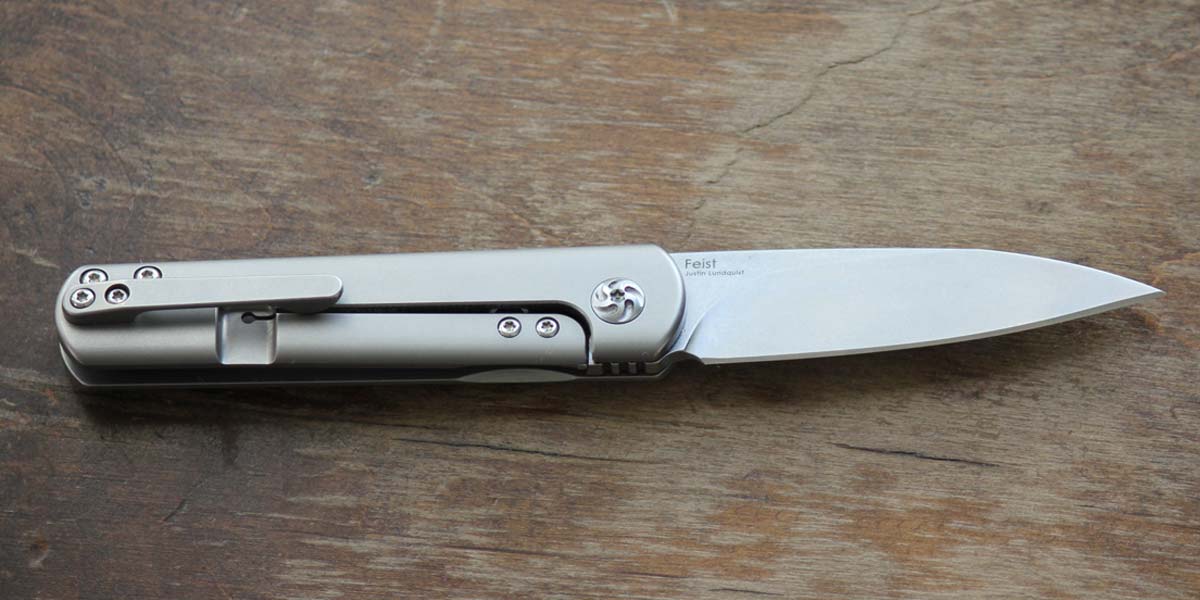
Part of the reason I chose to review the Feist over the dozens of other Kizer offerings is that it is very much aligned with what I look for in a good folder: it’s small, sleek, unobtrusive, and has the potential for a high fidget factor.
Designed by custom knife maker Justin Lundquist, the Feist has an overall length of 6.54 inches when open — which translates to 2.83 inches for the blade and 3.71 inches for the handle. The blade is described as a drop point profile, though it’s almost a spear point.
The blade is made from CPM-35VN stainless steel with a hardness of 58-60 HRC (see here if you want to learn more about what that actually means).
The handles are essentially two slabs of 6Al4V titanium. A frame lock keeps it open while a single position pocket clip rounds out the features of the handle.
A front flipper is the most notable part about the Feist design, but we’ll get into that later.
The knife has an MSRP of $256 and a street price at $168.
Kizer & the Feist Controversy

Before I delve deeper into the actual knife, I must address the Feist controversy.
Kizer has been around for a few years but really started making its name when it began working with popular knife makers. Despite being a company from China, people everywhere started fawning over the designs and quality of the knives. For example, the Gemini designed by Ray Laconico was widely considered one of the best knives of 2015.
All the reservations about Chinese knives from a Chinese company went out the window. Eventually, there was talk about a new front flipper from Kizer and the Feist became one of the most hyped models of 2017.
When it was released, many people jumped on the knife. However, reports quickly came out about gritty action. It turns out there was an issue with the stop pin being loose and uneven finishing around the pivot.
Kizer pulled those first-generation models from the shelf (though most were already sold) and offered exchanges for anyone who had issues.
It was a good response to a quality control issue that nearly all knife companies will deal with some day. Kizer took a hit, but it seems to have recovered pretty nicely. Any new Feist you get should not have any issues.
With that out of the way, let’s get on to the knife I have.
Initial Impressions
I like to start with an initial impression to gauge my gut reaction to the knife. The Feist came with a ton of packaging. Kizer has made some changes to its packaging over the years and its higher-end models come with a box and nylon storage pouch. I also received Kizer Mini Sheepdogs with more basic packaging.
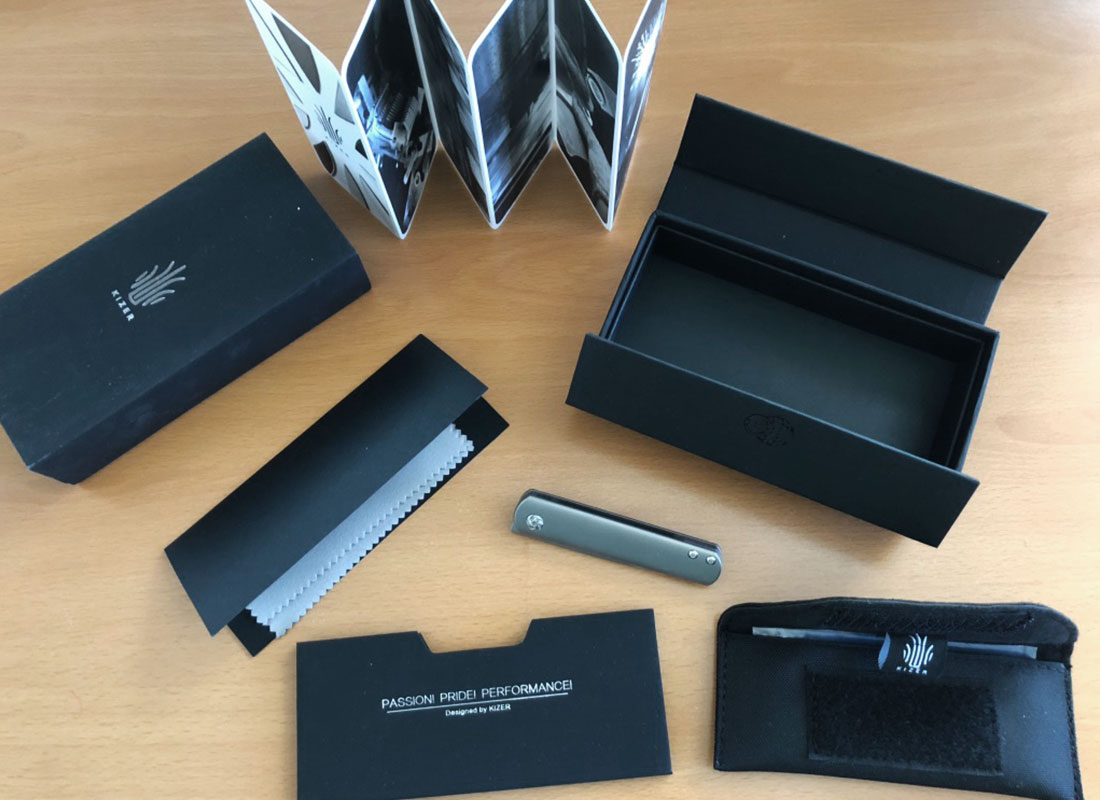
The nylon pouch is nice, but we’ve gotten to the point where you get a bunch of extra and often unnecessary swag with the purchase of a knife. I believe Tony Sculimbrene of Everyday Commentary and Gear Geeks Live once said he had a whole drawer full of branded pouches and bags included with knives. Still, if you’re not an avid collector and buy an occasional pricey knife, it’s a nice little gesture on behalf of Kizer.
One of the first thing that jumps out about the knife is its simplicity. This knife is as plain and uniform as they come. That’s not necessarily a bad thing, but that’s what I first noticed.
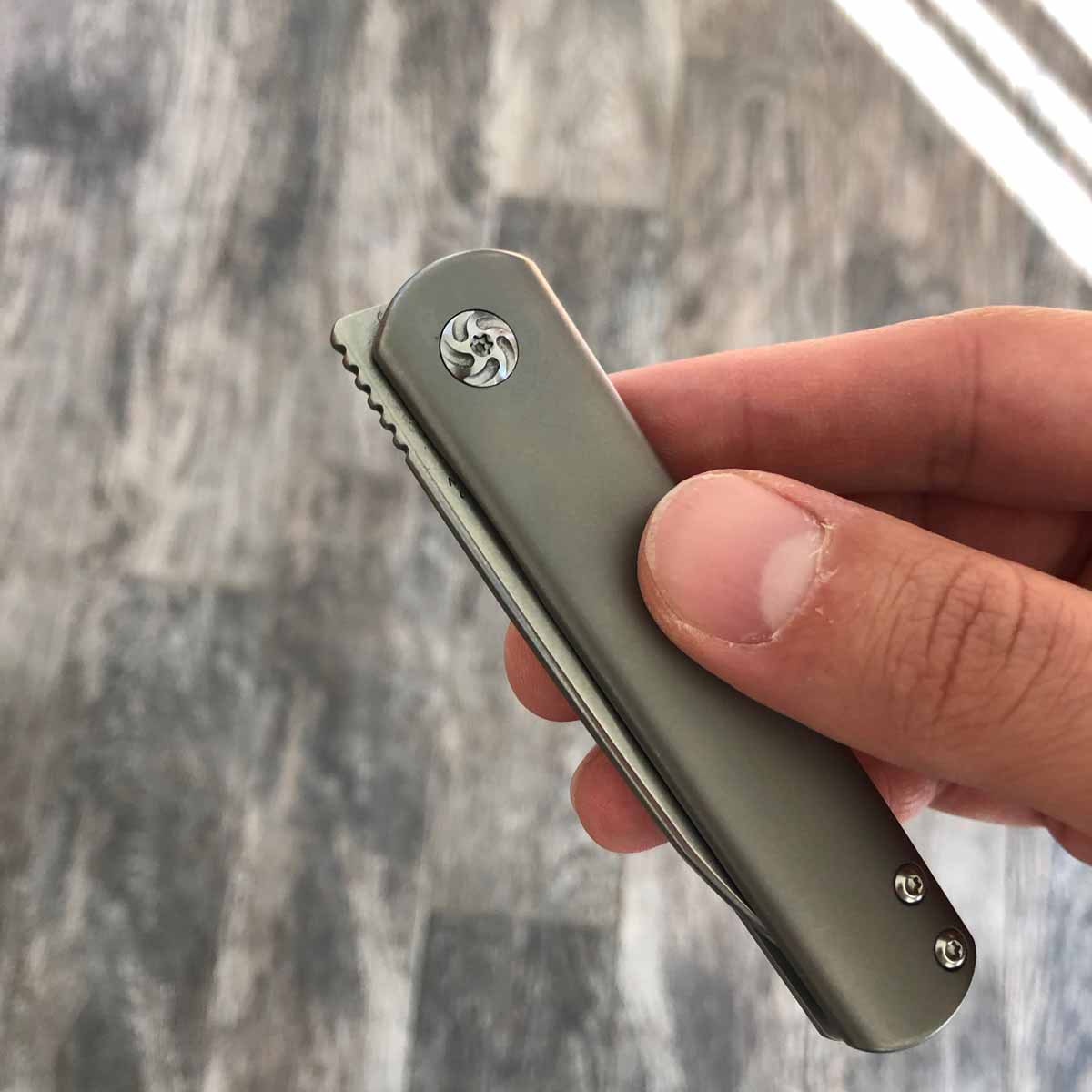
Everything looked nice and tight. There was perfect centering with no blemishes or gaps anywhere on the knife. Then it was time for the moment of truth: engagement.
*Cue the sad trombone!*
Instead of springing to life, the knife limply opened partially as my thumb struggled to pop the blade open with the front flipper tab. I knew it was going to take some time to get used to, but I admit I was a bit disappointed at my first attempt.
Everything else looked good and the blade was razor sharp out of the box. Let’s dive a little deeper into the knife.
The Blade
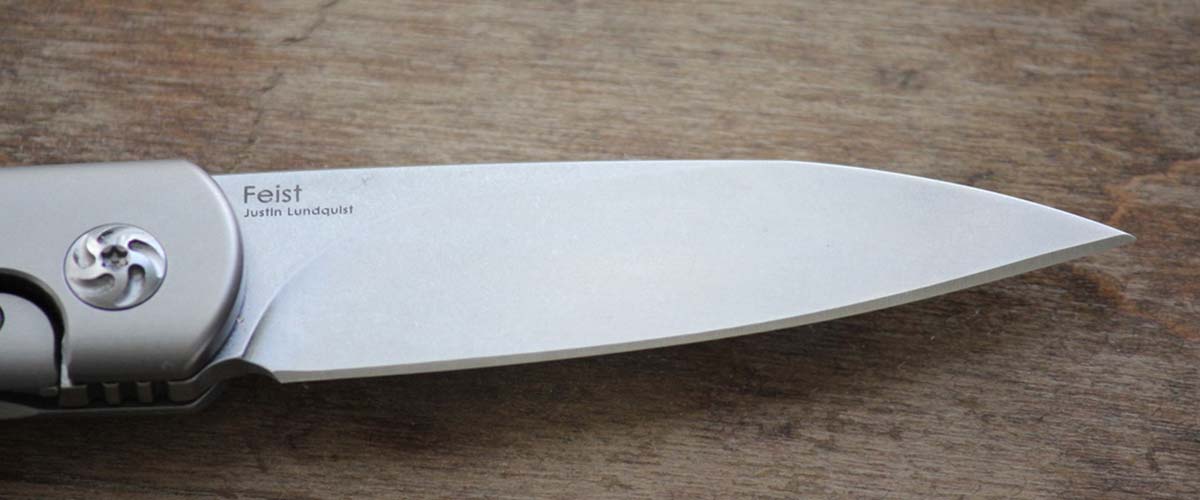
Let’s start with the blade itself.
Coming in at an overall length of 3 inches (from the longest part of the blade), the blade features a 2.75-inch cutting edge. The blade profile is described as drop point, but it almost resembles a spear point profile if you only see the silhouette. You can also argue that it’s a modified sheepsfoot blade akin to the Kershaw Leek. Take a look at the similarities.
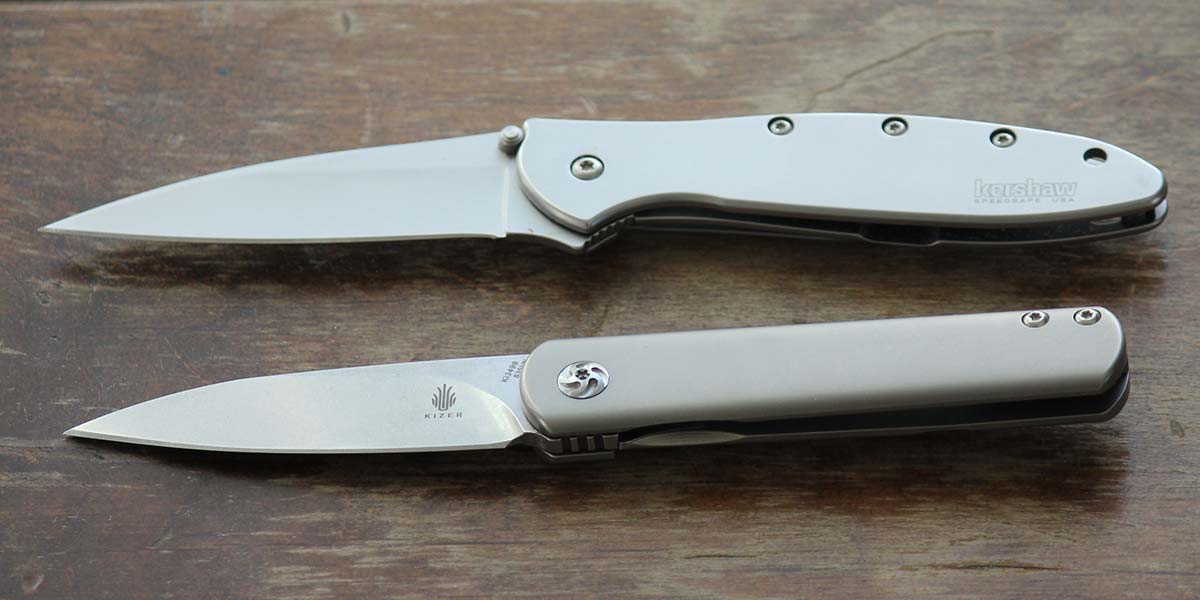
The lines on the blade are masterful. You have a hollow grind with an arced plunge line from the spine to the choil. It ends right in the middle of the choil, though I wonder if moving it back to coincide with the downward slope of the choil down toward the jimping would have been better. Of course, we’re getting into nitpicky details here.
The sharpening choil is a nice touch here and the edge extends all the away down to the choil. This means there is no unsharpened part of the blade (as I complained about in our knife nitpicks post recently). However, whether because the curve of the choil or just a simple error, the heel of the edge is somewhat awkward and juts out ever so slightly.
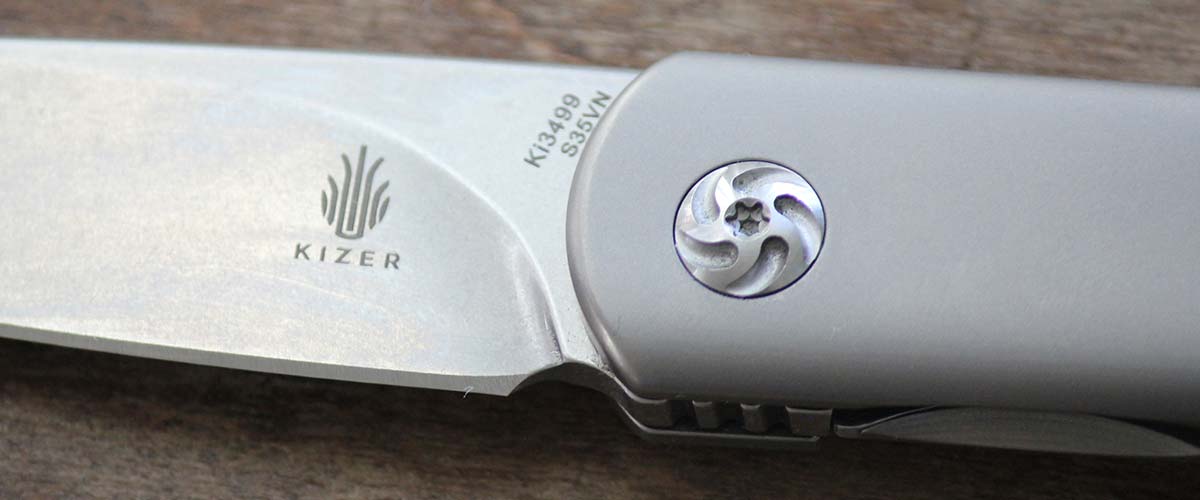
I really love the rounded spine, which feels very comfortable in the hand. After the workout this knife put my thumb through initially, it feels nice having a rounded spine with no soft edges to further torture my thumb.
There is some jimping along the spine that also doubles as jimping for the front flipper. This was well-considered because the jimping is slightly recessed beneath the handle, so the jimping is not so aggressive but catches your thumb fat enough for that extra control.
Like the rest of the knife, the blade is pretty simple without too much billboarding. The back ricasso says Feist and Justin Lindquist in tiny letters beneath while the front has the model number, steel type, and small Kizer logo. The logo, which kind of looks like a pineapple or maybe even Wilson from Castaway, is an improvement on the initial Kizer logo on the earlier models.
The Steel
The Feist — like all of the upper-end Kizer knives — uses S35VN steel. Despite the constant clamoring for better and stronger super steels, S35VN remains one of the best steels out there.
I must admit I am not a knife steel nerd, so I rely on the hard work of others like Pete over at Cedric and Ada Gear and Outdoors. In his test of the knife, he had an excellent 420 cuts of rope before some light dulling at a 17-degree mirror-polished finish — however, you will get way less with the factory edge.
Here is his video for your viewing leisure:
Still, that’s a whole lot of cutting. Unless you use this knife for work (which probably isn’t a great idea which we’ll get to later), you might only need to sharpen this knife a few times in your lifetime depending on the amount of everyday cutting you do.
Although your mileage may vary on S35VN steel from different companies (because of heat treatment and other factors), Kizer is known for how well it does S35VN. I recommend checking out one of the many other videos at Cedric and Ada on other Kizer knives and S35VN.
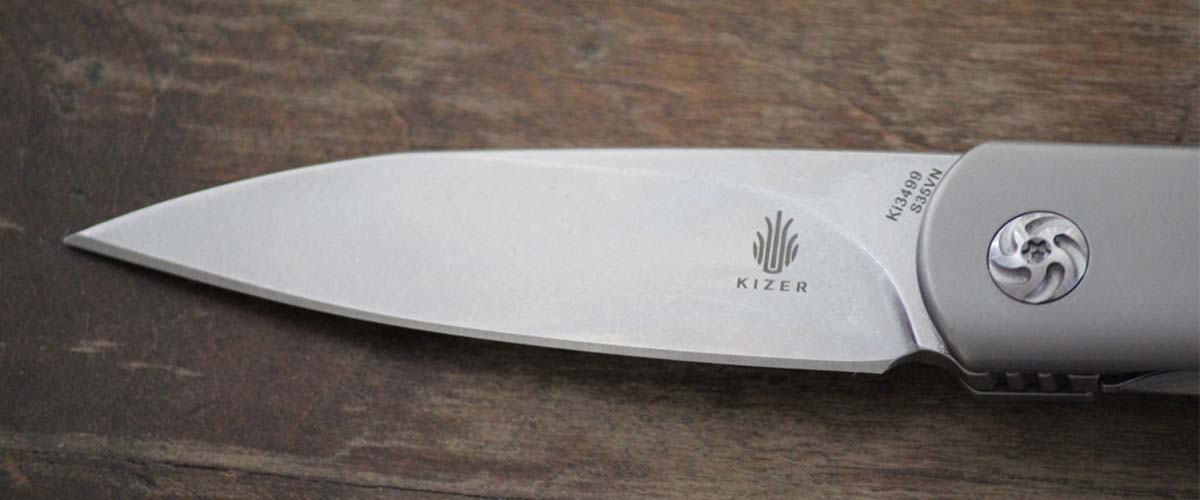
In very rudimentary terms that knife nerds will hate me for, S35VN has good stain resistance, keeps an edge for a fair amount of time, and is pretty tough. One of the tradeoffs is it can take more time and effort to sharpen than budget steels.
Front Flipper Deployment
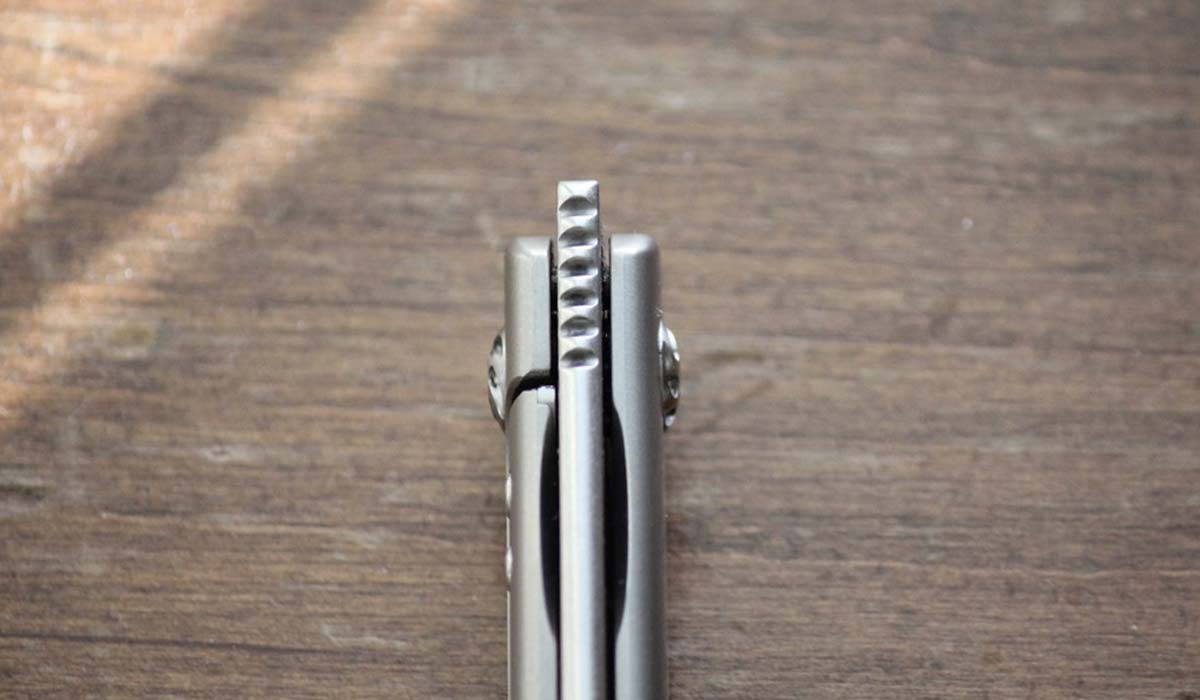
Now we get to one of the main selling points of this knife: the front flipper.
As I said, my first few times opening the Feist were clumsy as hell. For a quick refresher, the flipper tab pioneered by Kit Carson was placed behind the knife for a quick and easy opening action by the index finger. The downside of the old flipper is that it protrudes from the knife and looks wonky on many designs.
Front flippers have been slowly gaining traction with models like the Boker Plus Exskelibur and A2 and many of the higher end knives out there. Not only does the front flipper allow for a novel approach to opening the knife but it also conceals the flipper tab better for a more streamlined design, such as what you get with the Feist.
Unfortunately, the flipper has to be done perfectly for it to work every time. Whereas other front flippers can be mastered with practice, the Feist requires practice and hitting the right spot. I find that it consistently opens when the tang of the front flipper is against the side of my thumb. Even then, I do get a misfire every now and again.
However, I do appreciate that there are multiple ways to open the front flipper. You can do it with a flick (though I find it misfires the most), rolling open almost like a thumb stud, using your index finger over the top almost like a classic flipper (this method is fun and I find very consistent), opening a little with the thumb and then finishing off with the index finger, or opening a little with the thumb and flicking it the rest of the way. Here is a quick video of these different opening methods at the end of this post:
The front flipper is still a work in progress, but I don’t think the Kizer has quite mastered it. However, it does work pretty consistently.
Aside from the actual flipper, the pivot seems smooth and reliable. Unlike the first generations, there doesn’t seem to be any grittiness. The pivot runs on ceramic bearings nestled in a cutout. The action is good, but when I added just a little bit of Knife Pivot Lube to it, it became even better. The blade falls shut with disengagement. I imagine getting inside for a thorough cleaning and oiling could improve the action even more (but I’ll talk about that later).
Lockup
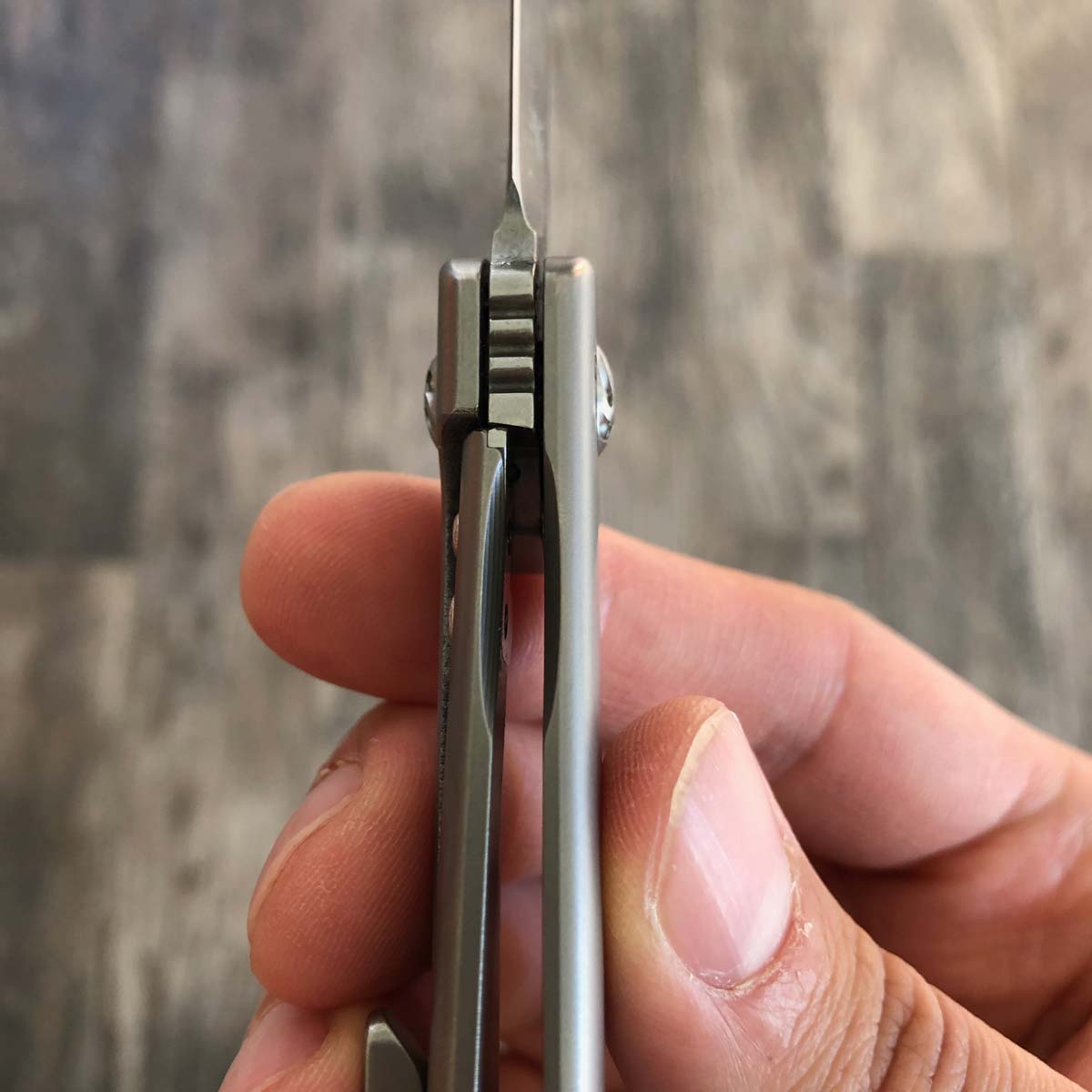
I admit I’ve come to appreciate other locking mechanism like the Compression Lock and AXIS lock over the years. However, there’s nothing wrong with a good frame lock when done right. The lockup on the Feist I have is at 50 percent. Some prefer earlier lockups, but I think 50 percent is nothing to scoff at.
The Feist also has a steel insert that serves a few purposes. Because titanium can wear quicker when interacting with the stainless steel of the blade, the stainless steel insert prevents that erosion. There’s also a hidden overtravel stop built into the insert that makes contact with the blade to stop the lock from hyperextension.
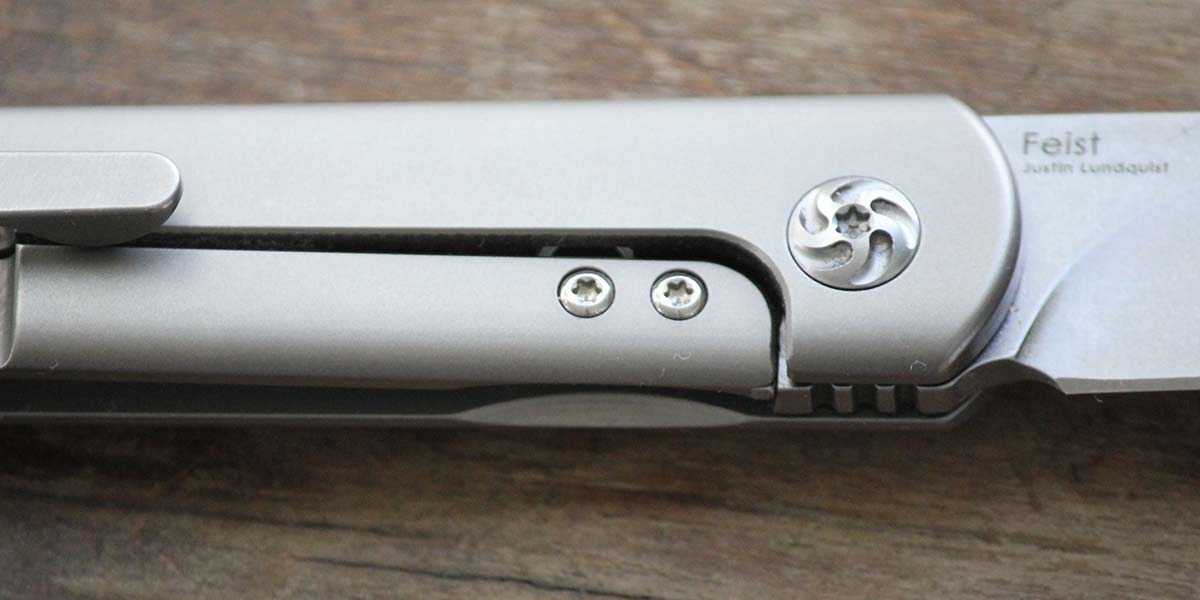
On this model, there is absolutely no lock play or lock stick.
Handle
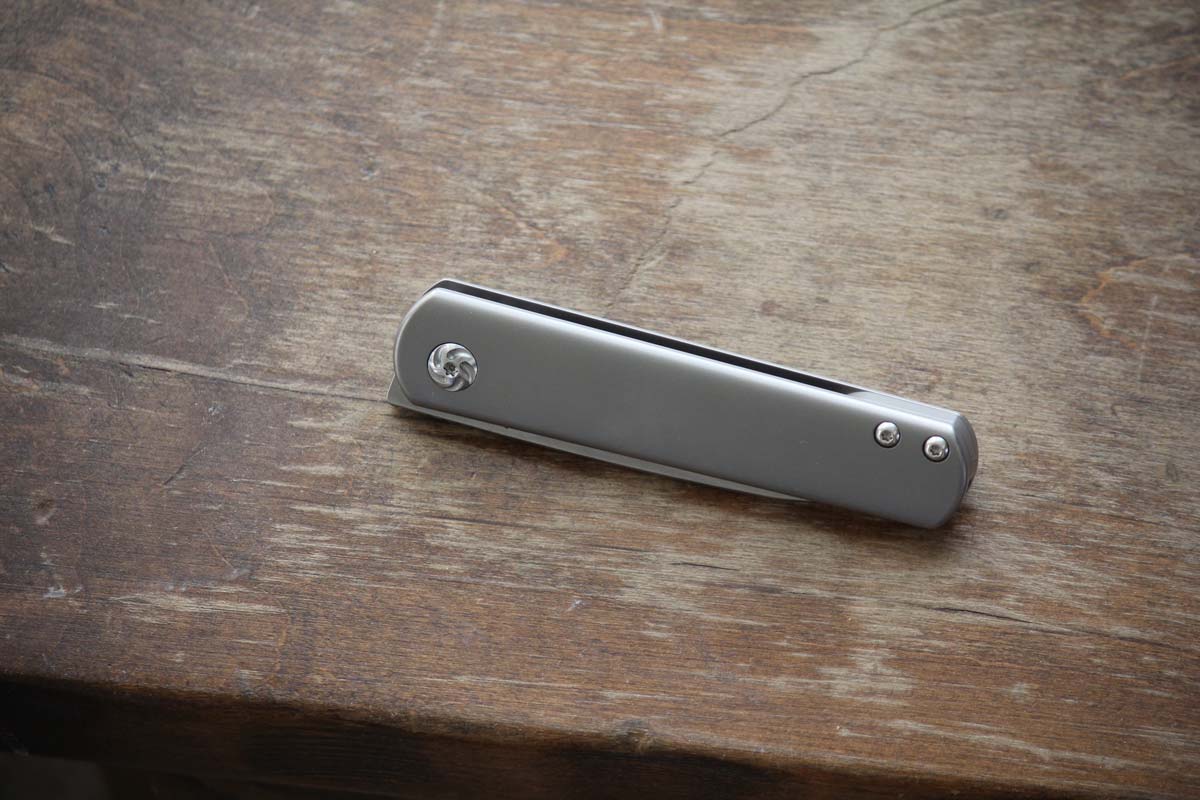
I’ve said it a few times in this review already, but the Feist is a no-nonsense design. The handles are two slabs of titanium. Titanium handles have the tendency to leave visible marks or snail trails, but after carrying this for a few months and treating it like a typical knife (ie actually using it and not babying it), there are no obvious marks on the handle so far.
The titanium scales also leave some wiggle room for modifications, such as anodizing in different colors. You can find the range of colorful Feists on Instagram. Here’s a great example:
Except for the screws that attach the backspacer, there is nothing on the handles. After the early Kizer designs from someone like Matt Cucchiara with aggressive texturing, these simple and smooth handles in designs like the Gemini and Feist are welcome.
Unfortunately, the smoothness and bareness of the handles provide some challenges to the user. Except for the jimping on the front flipper tab that’s slightly recessed when open, there’s not much to prevent your hand from sliding up on the blade during use.
For hard use, this knife is a no-go. However, I’m not sure you’d be expecting to use this knife for work unless you took a wrong turn somewhere.
How the Feist Carries
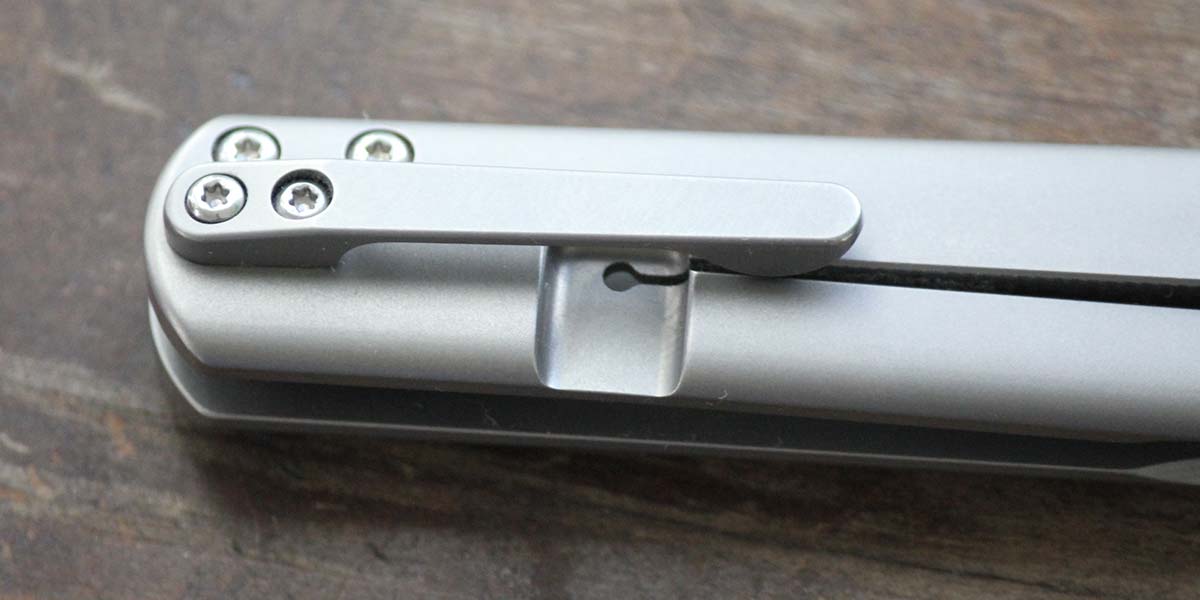
The Feist carries very well. The fact that there are no pocket peckers (as Nick Shabazz puts it) is a huge plus. The knife is thin and sleek and not so noticeable. For being two slabs of titanium, it only weighs about 2.6 ounces. I’ve heard people complain about that weight, but if you find that heavy, I don’t recommend carrying a knife like the Benchmade Adamas or most Cold Steels.
A sculpted pocket clip completes the simple yet effective balance of the knife. Some people love sculpted clips while others hate them. I think I learned to love them after carrying a now discontinued CRKT GSD (now there’s a heavy knife!).
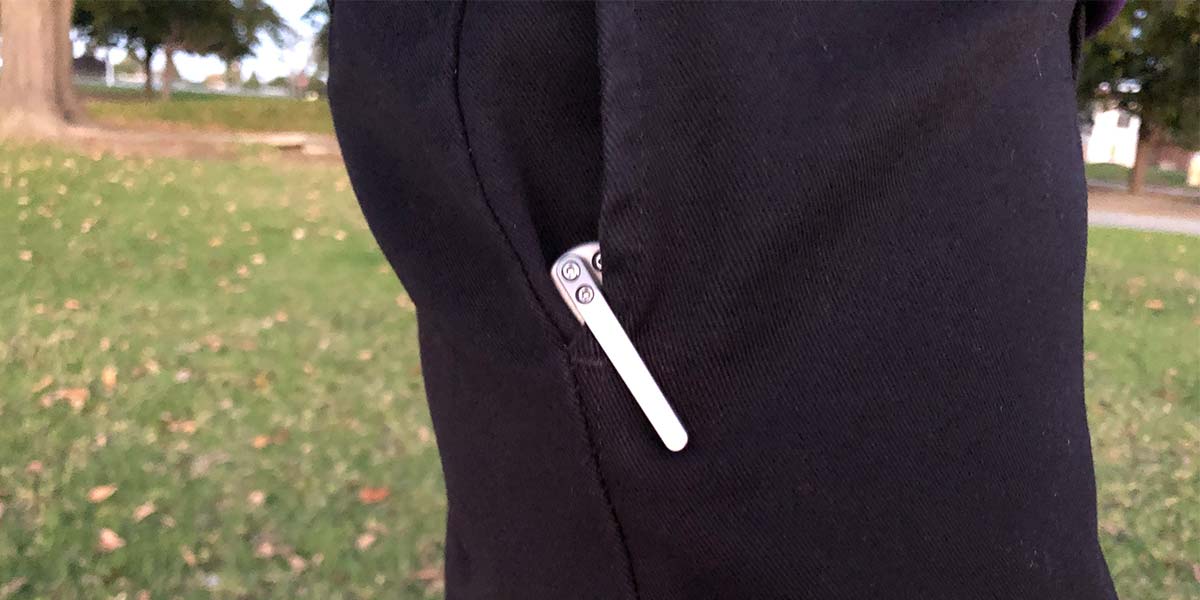
However, I argue this knife may carry better without a clip. If you have a pocket caddy or a leather pouch, this is a great knife to put in there. The holes where the clip should go may look a little funny though.
Feist Target Audience
To properly evaluate a knife, you have to look at who this knife is intended for. In Matthew Davidson’s review of the knife at Knife Informer, he said he reached out to designer Lindquist about his inspiration of the knife. He told Davidson that he wanted to make something the size of a traditional slip joint but with a frame lock.
It’s safe to say this knife was not intended as a hard-work folder. Everything from the blade profile to the smooth handles indicates this knife is meant to be nothing more than a gentleman’s folder for EDC.
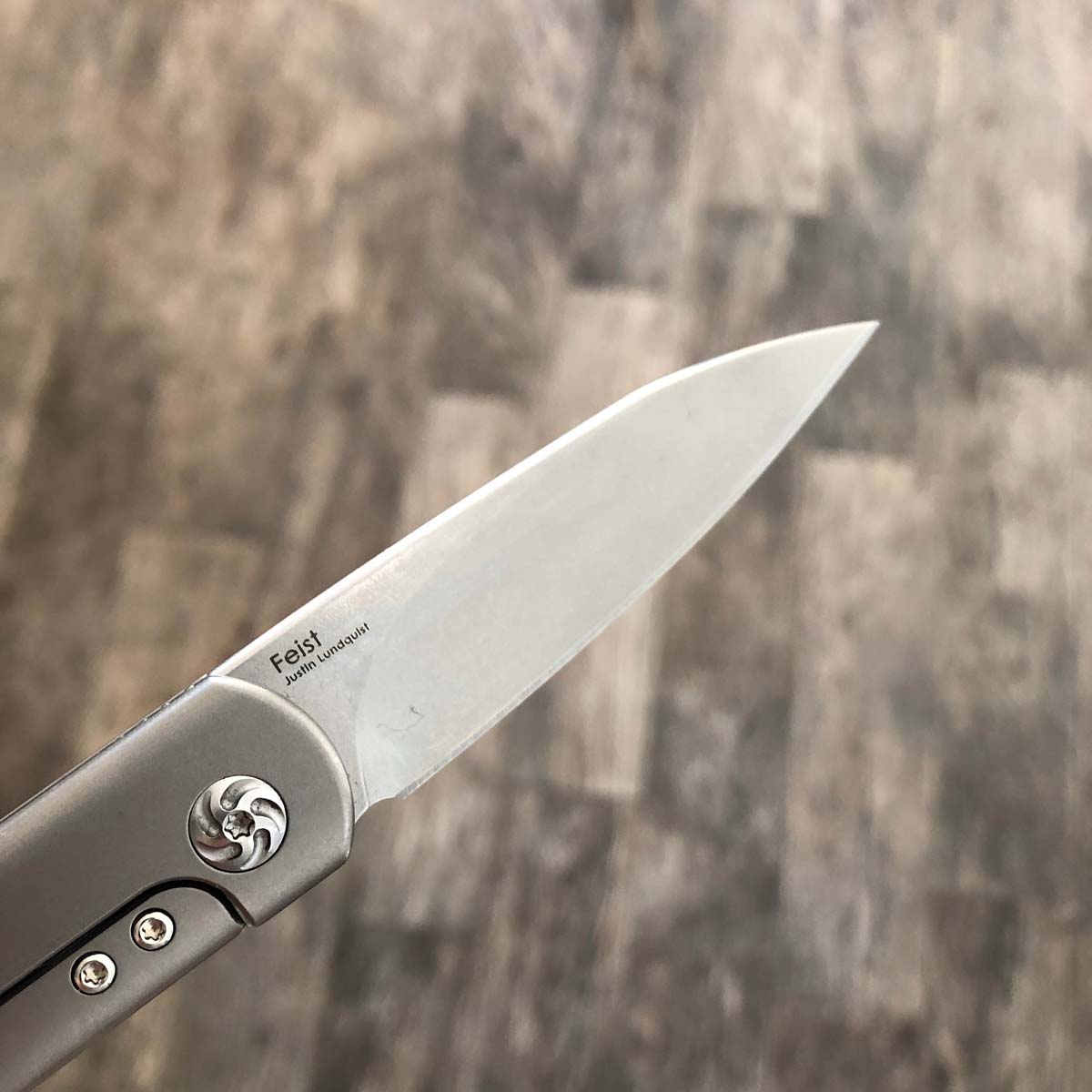
The handle won’t be comfortable in the hand for extended periods of time (as Pete from Cedric and Ada can attest). The blade is way too small for heavy duty tasks as well. However, the blade size is perfect for EDC in my opinion. Not only does it have a great piercing point but the size means it’s legal in most places.
As a gentleman’s folder, this knife hits all the right spots. It’s something you can feel comfortable taking to the office or whipping out at a retirement party. But don’t expect to use it at the construction site with much success.
Kizer Warranty Info
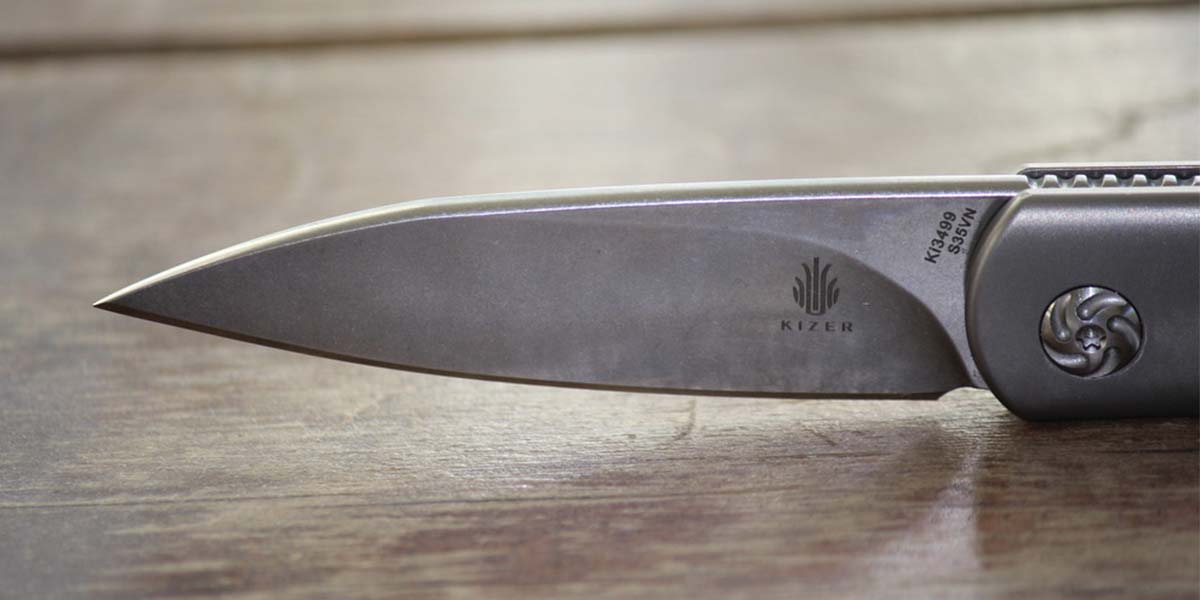
It’s important to note that at this time, Kizer does not allow for disassembly of the knife. Folks like Nick Shabazz will tear down a knife to show you the inside, but that’s not necessary most of the time. Still, it would be nice of Kizer to allow for disassembly without voiding the warranty. Companies should be encouraging maintenance.
But, it’s safe to assume that if something is wrong, Kizer will be on top of it. Their handling of the 1st Generation Feist fiasco was appreciated.
Kizer’s Continuous Quality Improvement
It’s also important to note that Kizer engages in the practice of Continuous Quality Improvement. This is the same thing that Spyderco does — making tweaks to a design to perfect it. That’s why we have the Delica 4 and Paramilitary 2.
However, Kizer does this in the middle of a production without adding a 2. For example, they could have made the Feist 2 be the current generation to put to rest any confusion that you might be getting a Feist 1. Also, it means changes are still going on to the Feist.
Kizer recently announced that it was doing away with the much debated swirl pivot for a more straightforward pivot (though both of these are much better than the first Kizer pivot). This means those who buy the newest Feists will get these small changes.
Changed pivot screw for new production. #kizer #kizerknives #kizercutlery #kizercutlery_inc #kizerfeist…
Posted by Kizer Cutlery on Monday, November 12, 2018
Another change I noticed is that the part of the frame lock where you disengaged the lock has some very fine texturing. I don’t think this was on the earlier batches.
While CQI is welcomed, it does mean you could get a wide variety of knives, depending on when you buy it.
Also, Kizer just released some new iterations of the Feist with cutouts and a reverse tanto blade profile. I heard that the insides are completely re-engineered for a more reliable action and correct some of the shortcomings of the original Feist. So if you like the look of the newer Feist, you might want to pick up that version.
Feist Conclusions
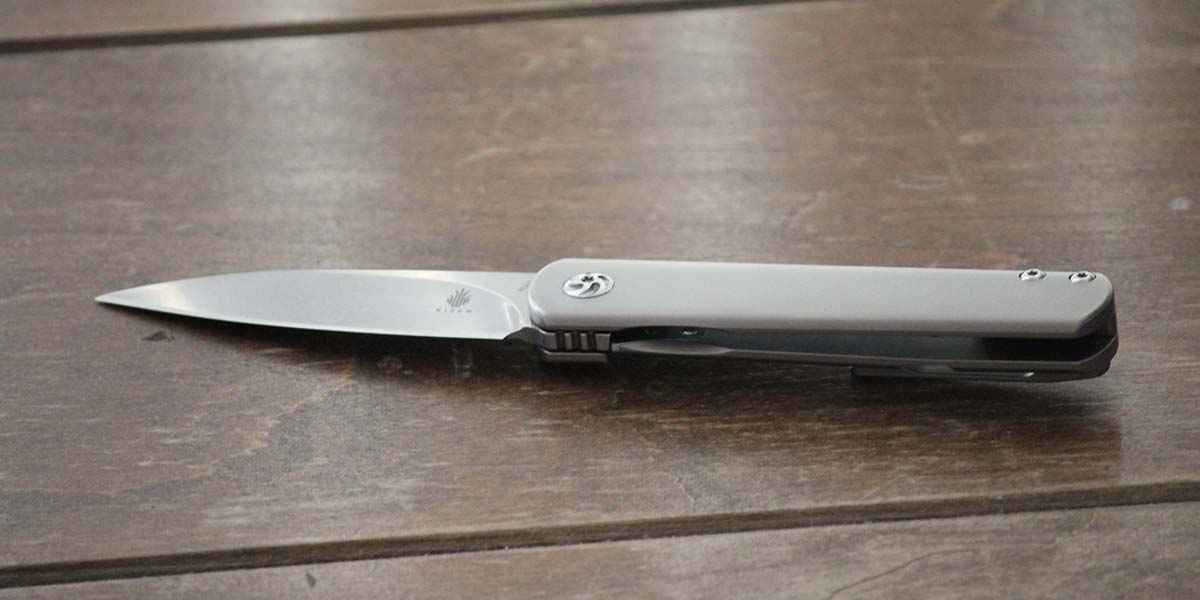
Overall, I’m quite happy with the Feist. It met the needs I was going for. I wanted a low-key knife with a unique opening mechanism and reliable materials and Kizer delivered.
I found the front flipper design to be a bit of a disappointment but still functional. On top of that, the fidget factor remains high. This is a knife you could play with while working in the office — if that’s something you look for in a knife.
Even though it might not seem like it, the materials and design match the price tag of $168. For about $35 cheaper, you can get the Boker Plus Eskelibur I front flipper with an S35VN blade and titanium handles, but it is two inches larger and has some tradeoff on quality. You can get a Benchmade Mini Monolock with M390 steel and titanium handles but at nearly twice the price and a larger blade. The Chris Reeve Mnandi is more than $400. Real Steel has some cheap front flipper designs coming out, but they don’t match the quality or purpose of the Feist.
If you’ve on a tighter budget but want a modern and unique gentleman’s folder or really want a front flipper, the Feist remains your best bet. Now if you have money to burn, hunt down a Gareth Bull Shamwari.
But, even though more companies are coming out with front flippers, the size, design, quality, and function of the Feist still hasn’t been matched.
While carrying this knife around for the past few months, I’ve come to appreciate its high fidget factor and unobtrusive design. You can find out more about the knife at Kizer.
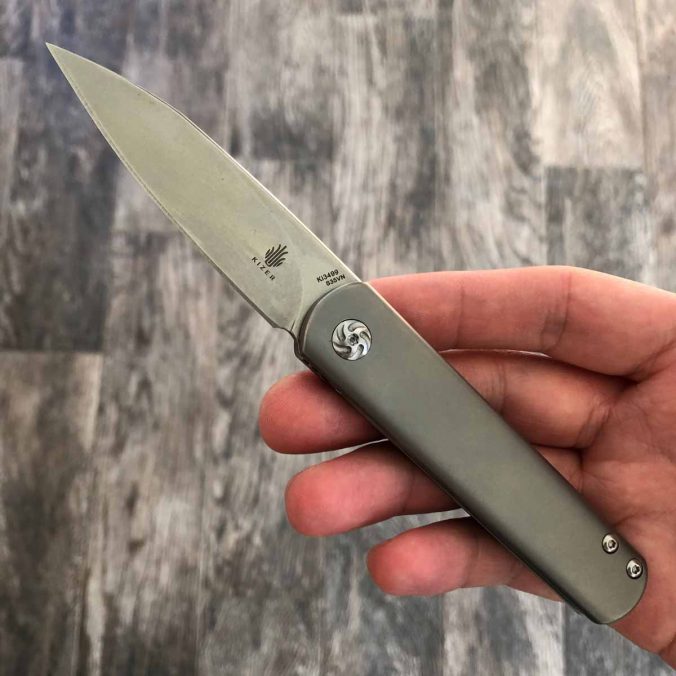
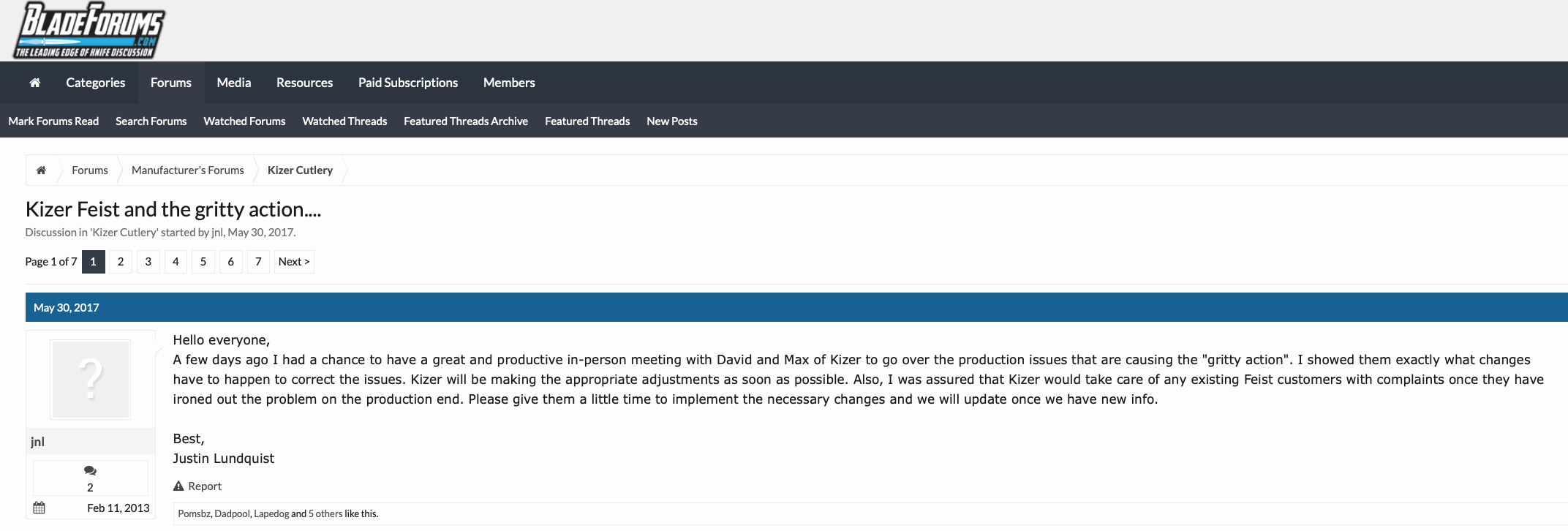




June 23, 2020 at 8:50 pm
Mr. Martinez- I do understand your desire to give credit where it is due, but when we discuss products created in a Totalitarian country, I believe we must look at the people as victims. These people have no voice, no power, no property, they are slaves to xi jinping who treats the people of China as trash, his trash. I think when we support jinping we allow this evil man to rule for a long time. I don’t know the answer to interacting with China, I truly believe the people are just like us and would love Liberty- should we support the country or start making our own products again – Just wanted to give my opinion. Thank you
January 24, 2021 at 1:03 am
Excellent review. I think you covered everything!
I ended up buying the reverse tanto/lambsfoot version and I’m in love with it. The extra milled holes in combination with the grind on the reverse tanto is really *chefs kiss* IMO.
I also saw that there is a 2020 v3 version out where they removed the backspaced for a stand-off and milled a cutout for the clip so it’s more recessed as well as making the lock bar area for your thumb bigger and textured.
But either way, like you say, it’s not a work-knife. It’s a gentleman’s pocketknife for EDC.
February 9, 2021 at 4:02 am
Amazing info. I liked your blog. Hopefully, you post more such blogs in the future. Thanks for sharing this.
May 28, 2024 at 7:41 am
In a market saturated with expensive options, TacKnives stands out by offering premium quality knives without the hefty price tag. Our knives are meticulously designed in-house, produced in small batches, and rigorously tested to ensure durability and performance even in the most extreme outdoor conditions.